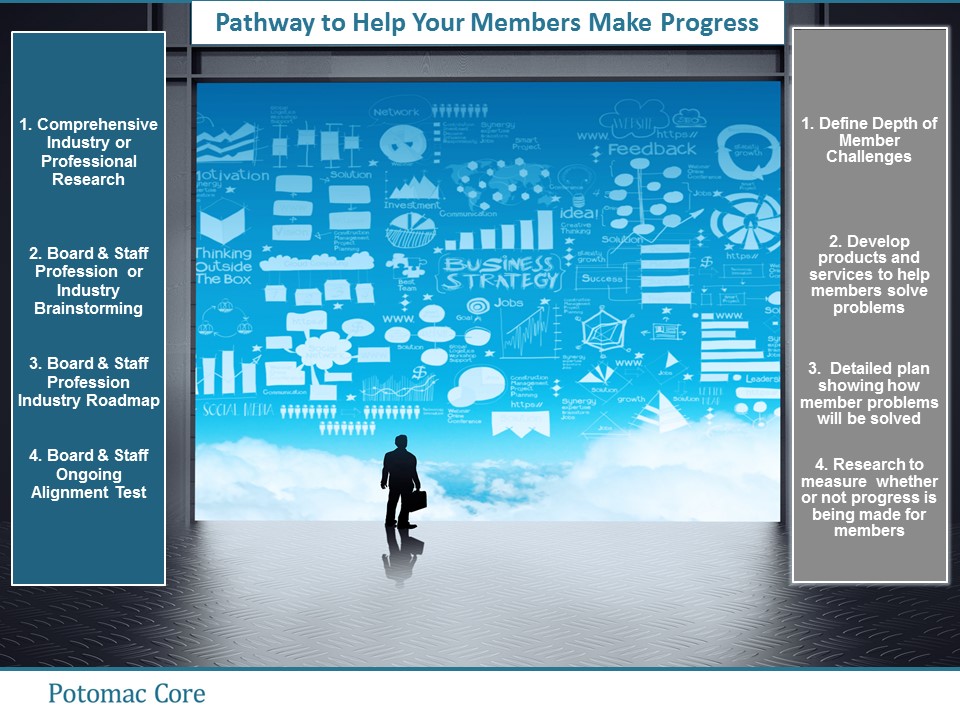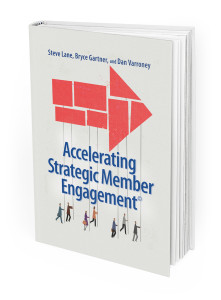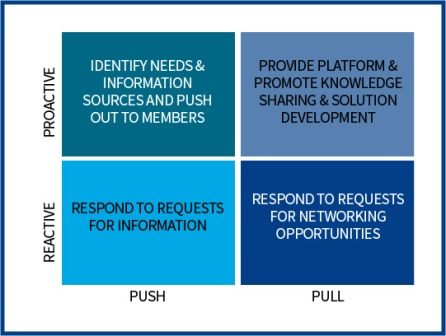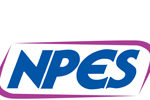Members Hire Bold Strategies. Part of that boldness is how much their Industry Trade Association Strategic Plan reflects the challenges and business outcomes that members care most about. As busy executives are under constant pressure to meet and exceed profit targets, they expect the organizations they are part of to deliver bold strategies and results. If not, Members will vote with their feet and go somewhere else.
New Mantra: Members Hire Bold Strategies
Make no mistake about it, busy executives have choices about where to participate. If there is not a connection between what your Association does and what a member needs to achieve, they are gone, and possibly forever. For your organization to remain relevant, strategies and planning must be based on what bold actions your Association can take to influence the external environment where members conduct business. It’s no longer about what your Association needs to achieve, instead it’s about understanding what blocks your member’s progress and what clears a pathway for future success. Another reminder that Members Hire Bold Strategies.
Every Industry Faces Tough Challenges
The nature of a global and dynamic marketplace means that every Industry faces more than its fair share of challenges and growth opportunities. What’s different today is how the business environment is increasingly more complicated. Economic uncertainty, disruptive innovation, & political gridlock can sometimes be the strategic equivalent to a toxic “triple cocktail.” Today’s Association Boards are seizing a new moment and utilizing their Strategic Planning process to position the Industry Trade Association to help their Industry do blocking and tackling in a very meaningful way.
One recent example is the Washington, DC based American Bakers Association (ABA). Following the great recession of 2008, the Wholesale Baking Industry faced an onslaught of regulation, increasing costs, worker shortages, changing consumer tastes, and online competition. In March of 2017, a Task Force comprised of the Board of Directors and Staff Leadership launched a Strategic Planning process. From the start, the process focused on how to best align ABA with the Baking Industry to support its ongoing growth and success.
Industry Engagement and Survey Research
Since Members Hire Bold Strategies, ABA took a different pathway to update its Strategic Plan. Instead of utilizing an Association focused Strategic Planning process and member satisfaction focused research, ABA leveraged in-depth survey research and interviews of the baking Industry. Their focus was to get a clear picture on the challenges facing their members and align the organization with the business success that the Industry wants to achieve.
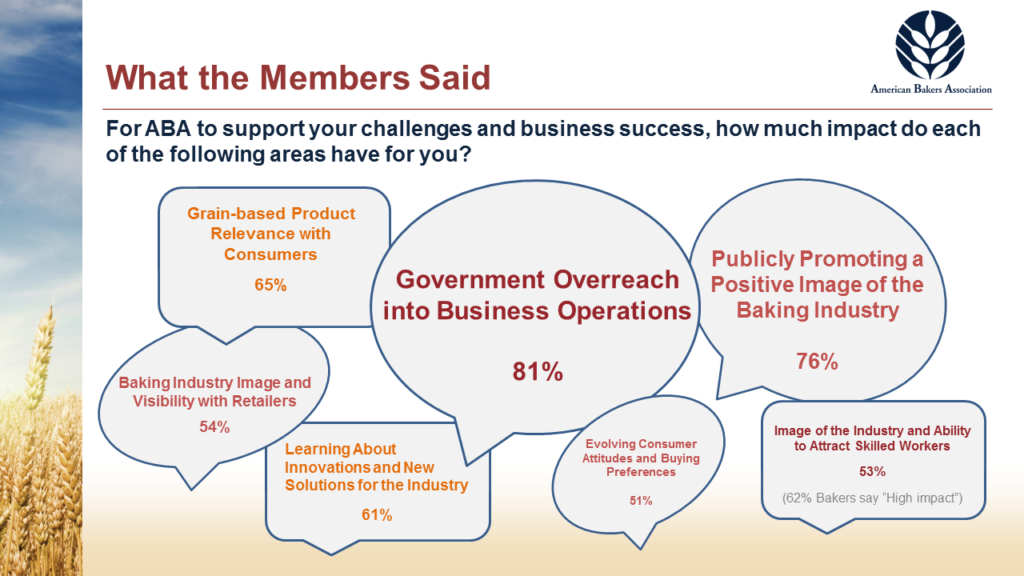
The process was driven through a collaborative effort of a Board Task Force and a Staff Leadership Team. Throughout, Industry leaders thoughtfully and strategically guided the process to the clear outcomes they want ABA to address:
- Industry growth and promotion to protect it from government overreach
- Advancement of careers to improve worker retention
- Attraction of skilled talent to contribute to Industry growth
 What do these clear outcomes really help drive? For an Industry facing tough challenges they have an ally to help them create a more receptive environment to grow the Baking Industry. Robb MacKie, President & CEO and his Team are energized with the new Strategic Plan and the Industry’s support to execute their new plan. “Thanks to the strong plan the members have created, ABA will be better aligned with the business success of the Baking Industry. ABA is the voice for the Industry and that voice will now be even more effective.”
What do these clear outcomes really help drive? For an Industry facing tough challenges they have an ally to help them create a more receptive environment to grow the Baking Industry. Robb MacKie, President & CEO and his Team are energized with the new Strategic Plan and the Industry’s support to execute their new plan. “Thanks to the strong plan the members have created, ABA will be better aligned with the business success of the Baking Industry. ABA is the voice for the Industry and that voice will now be even more effective.”
Association Mission and Vision in the Rear View Mirror
Association relevance isn’t about the organization any longer. It’s about the Industry or the Profession that is represented by the Association. Instead of an Association Mission & Vision Statement, it’s a Strategic Objective. A Strategic Objective is all about what the Industry will have achieved because of the Association’s Strategic Plan. Yes, it must be a bold statement because Members Hire Bold Strategies. For ABA, it’s means highlighting the far-reaching and positive impact the Baking Industry has in the United States:
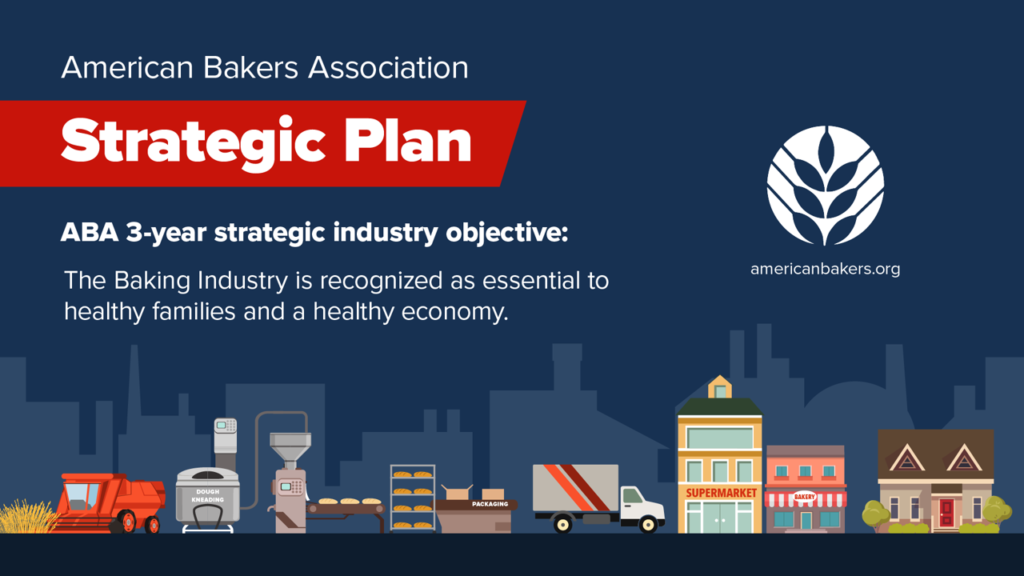
Actionable and Industry Focused Strategic Initiatives
Utilizing Survey Research and Strategic guidance from a Board Task Force, ABA’s Staff Leadership Team formulated initiatives and activities that pinpoint what the Baking Industry seeks to achieve.
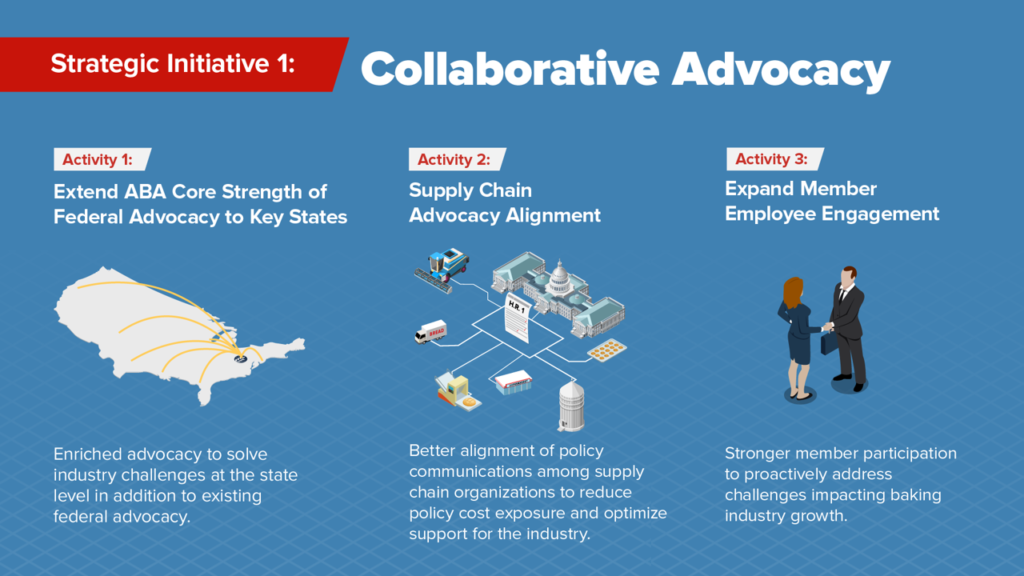
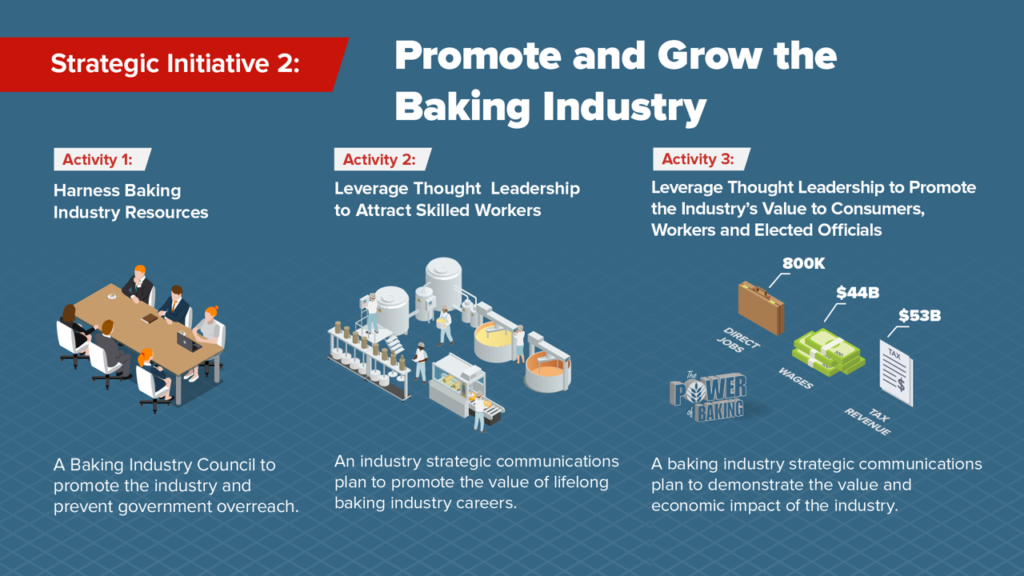
As part of its due diligence, ABA also conducted an evaluation and assessment planning process to ensure that the organization is best positioned to address & solve Industry problems for the members:
- Sunsetting process to identify their non core products
- Readiness Assessment on existing & new core products
The initial phase of the Strategic Plan was approved by the Board of Directors on April 15, 2018 and presented by the Board Task Force to an all Membership Meeting at the Annual Convention in Scottsdale, Arizona. The Staff Leadership team will finalize Metrics to measure new product & service impact on Industry Business & Growth Challenges and report the plan’s progress on an annual basis to the Board Strategic Planning Task Force. Reflecting on a year long Industry Focused Strategic Planning Process, ABA Immediate Past Chair Fred Penny said “This plan is a product of the ABA membership. We could not have done this without the candid feedback and guidance of our member leaders.”

Members Hire Bold Strategies
No one knows when the next economic recession will occur. Yet what remains clear is that economic uncertainty, disruptive innovation, & political gridlock will continue to force Industry and Professional Associations to demonstrate relevance. Understanding why Members Hire Associations, & why they Fire Associations are the threshold questions that every Association CEO must answer. Once they’ve done that, they will understand that from now on Members Hire Only Bold Strategies.











